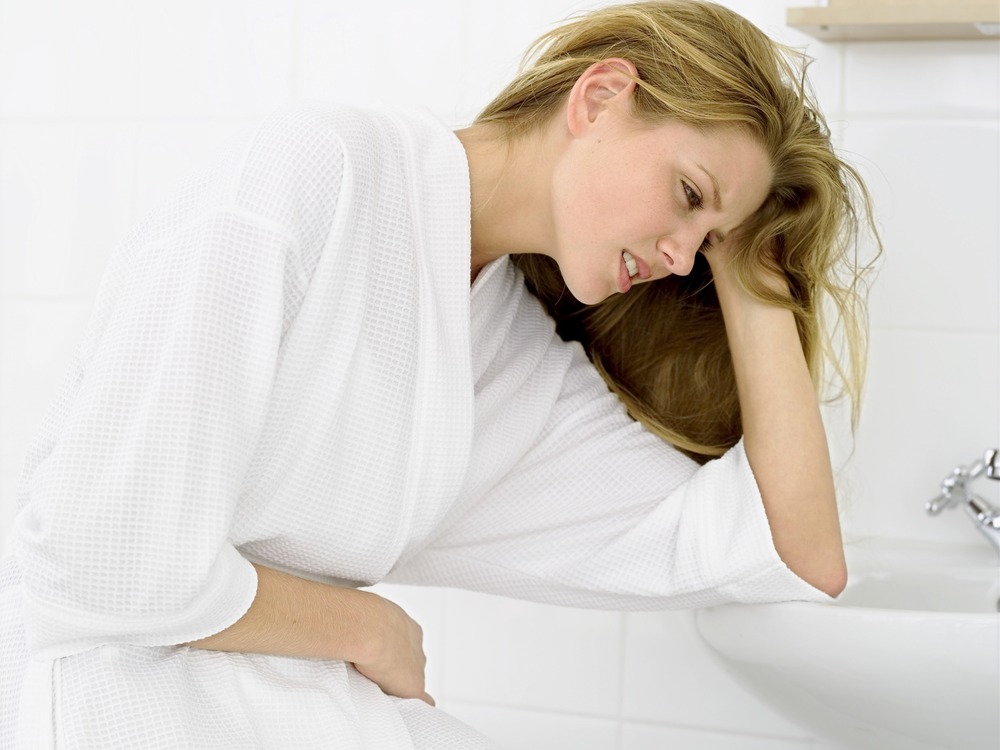Brown discharge may occur between the normal menstrual cycles. It is usually either menstrual discharge that has taken longer than usual to come out of the reproductive system, or an result of the reproductive system self-cleaning process. Brown discharge is sometimes accompanied by cramps. The combination of the two is very unpleasant and could also be the symptoms of other health conditions in the women’s reproductive system.

What Do Brown Discharge and Cramps Mean?
1. Menstrual Period
The type of discharge is unique to the individual woman. Brown discharge which may be accompanied by cramps is usually temporary, occurring in a short duration of time before and/or after period. So it normally shouldn’t raise an alarm. But it’s important to find out the reasons of its occurrence.
2. Ovulation
During ovulation, a certain percentage of women experience short cramping which may occur together with exit of brown tissues. This could be as a result of increased hormonal levels, causing the uterus to contract and expand.
A slight short cramping lasting for about 30-60 minutes in the middle of a period accompanied by the discharge is an ovulation sign.
3. Miscarriage
Light spotting or bleeding combined with brown discharge and cramps can sometimes result from an early miscarriage. Hormonal dysfunctions, chromosomal abnormalities, infection, and diabetes are some of the usual causes of termination of pregnancy in the first trimester.
4. PID (Pelvic Inflammatory Disease)
This is an emergency condition that can lead to pelvic adhesions and scar tissue since it can affect the uterus, the fallopian tubes or even the ovaries. PID can be transmitted through sexual intercourse, and the sexually active female youths ranging between the years 20 to 31 are often most vulnerable.
Pelvic Inflammatory Disease develops in the internal organs, causing non-ending pelvic pain, infertility and ectopic pregnancy. Women with PID can get uterine contraction between periods. Other symptoms of PID include:
- Bleeding between menstrual periods
- Smelly vaginal discharge
5. Ectopic Pregnancy
This is the type of pregnancy that rarely makes it to term and most often the embryo does not develop. It usually ends in an early miscarriage.
Ectopic pregnancy happens when the fertilized ovum implants itself outside the uterine wall, usually within the fallopian tubes. This sad and very emotional moment often comes with brown discharge and cramps.
Other symptoms of ectopic pregnancy are:
- Vaginal spotting
- Dizziness or fainting, among others
In case of the above, medical treatment which may include an operation is recommended.
6. Endometriosis
This is a condition that endometrial cells grow outside uterine. Some of the areas these implants can be found include ovaries, fallopian tubes and surface lining of the pelvic cavity.
Endometriosis implants are benign. Endometriosis can occur with no symptoms or very mild ones, like cramping. Some women experience pressure and pain during or after intercourse, or even brown discharge and cramps. The condition can also cause painful period and infertility.
7. Cervicitis
Sexually active women with multiple partners often don’t use protection. They are, therefore, at a higher risk of developing cervixitis which involves inflammation of the cervix. Exposure to chemical irritants and/or being allergic to condoms can also cause cervicitis.
Cramps and brown discharge can occur in women with cervicitis. Its symptoms include brown spotting between menstrual cycles and pain during or after sex.
8. Uterine Fibroids
These are cancerous cells that form due to hormonal dysfunctions and genetic predispositions. Uterine fibroids usually develop in the uterine lining. Women who develop uterine fibroids may experience cramps or irregular exiting of brown tissues out of the body. Lower back pain and frequent urination are some of the uterine fibroids symptoms.
9. Implantation Bleeding
Implantation is when the ovum attaches itself to the uterus lining. Sometimes a brownish or pinkish discharge is expelled out of the woman’s body, this is called implantation bleeding or implantation spotting. Mild cramping can also be experienced.
Severe brown discharge and cramps should be an immediate call for a pregnancy test and a visit to the doctor.
When to Seek Medical Help
Immediate medical help is recommended for anybody with severe bleeding. Any of the following symptoms is also a reason to seek emergency medical care:
- Bloody vaginal discharge not connected to the normal menses
- Sharp pain accompanied with vomiting, fever, or chest pain
- A burning feeling when urinating
- Lower abdominal pain exceeding 24 hours
- Pain and discomfort when having sexual intercourse
- Substantial loss of weight
How to Help with the Brown Discharge and Cramps
The doctor’s prescription in these cases depends on the cause of the ailment. Other methods to help with brown discharge and cramping include:
- Eating a balanced diet and drinking a lot of water, which helps in minimizing severe vaginal infections.
- Protect the genitals by putting on cotton underwear. Make sure they are always washed and clean.
- Don’t use deodorants or spray perfumes in the private areas.
- Avoid sexual intimacy till you get healed.
- Follow the doctor’s prescribed medicinal instructions.
- Pain relievers such as ibuprofen can help to relieve lower abdominal discomfort and pain.
